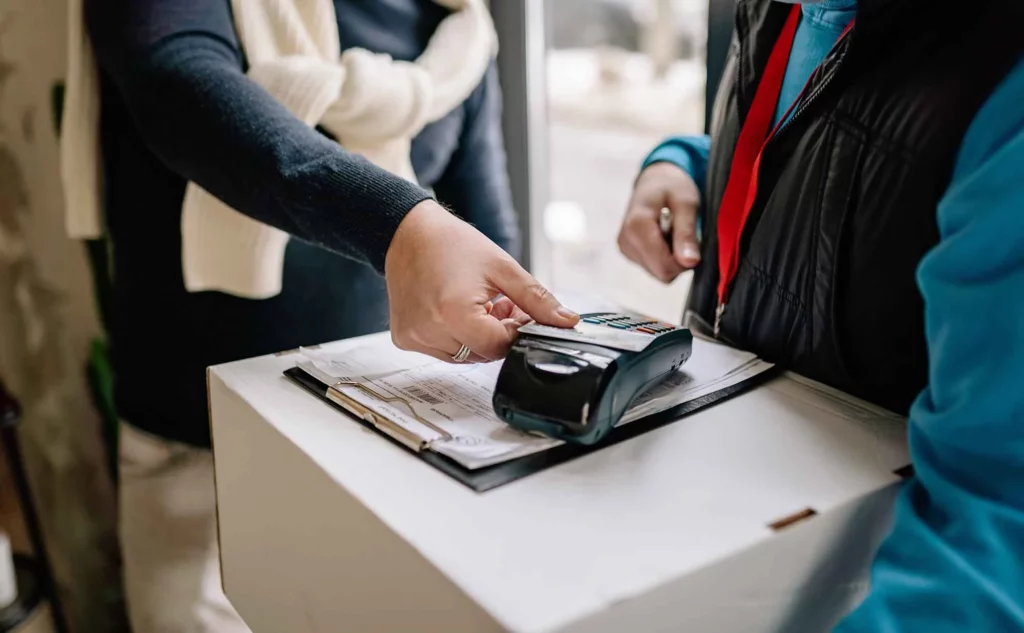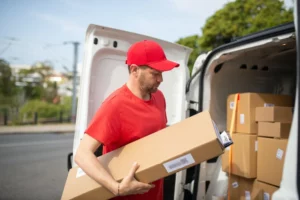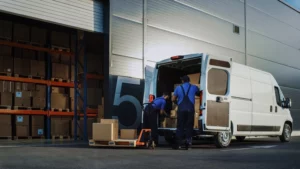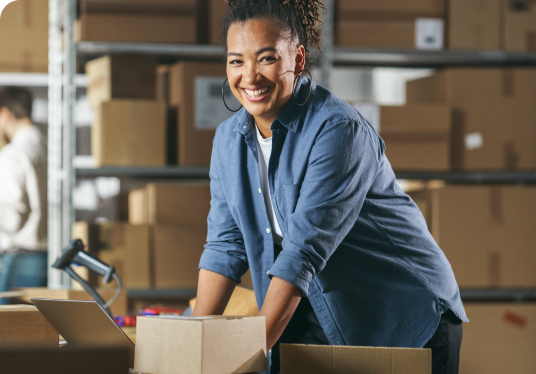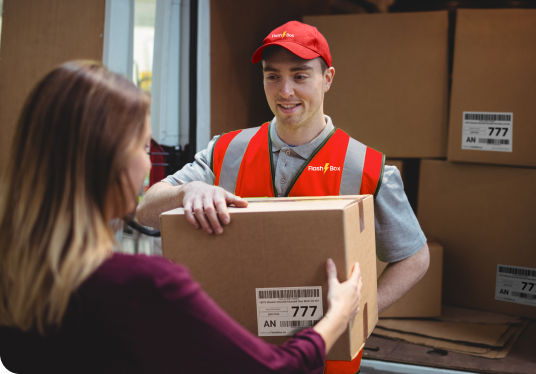For many merchants, the speed at which they deliver their orders drastically impacts how happy their customers are in the end. Deliveries, however, can be especially hard to manage for businesses that are shipping high volumes of orders every day to multiple locations. Shipping costs only escalate with last-mile delivery demands.
This article breaks down the costs of last-mile delivery. A firm understanding of where the costs come from makes it easier to see where money can be saved.
What is Last-Mile Delivery?
Last-mile delivery takes place after an order has already been made by a customer and packaged by a merchant. Once all these parts of the process are complete, the parcel is ready to be handed off and the delivery can be completed.
Last-mile delivery is the final stage in the delivery process. It encompasses the movement of parcels after they’ve left a warehouse or sorting facility until they make it to the final customer. What may seem easy is one of the most complex stages of delivery, with many moving parts to be organized. Without the right protocols set up, last-mile delivery is a complex barrier to overcome.
Why Last-Mile Delivery is Vital for eCommerce Operations
Last-mile delivery is a critical process to coordinate for any e-commerce brand or shop offering delivery services. Nowadays, most customers expect same- or next-day deliveries and base their shopping decisions on which options they have available. For this reason, companies offering faster deliveries stand out.
Delivery options also have a large impact on overall customer satisfaction. The more options customers can choose from, the more uniquely focused they feel the delivery is to them.
A business’s growth is directly impacted by how well it can finalize its deliveries. The better organized the last mile is, the more deliveries they can complete and the more customers they can satisfy.
What Are the Costs of Last-Mile Delivery?
The costs of last-mile delivery easily make up the bulk of all shipping stages. In fact, 53% of all delivery costs are made up of last-mile portions alone.
But why are the costs so unbalanced? Last-mile delivery requires the largest number of steps to be completed successfully. It requires a facility to package and organize the deliveries, which can make up a large portion of the price. Delivering to customers’ homes also requires many drivers, all of whom must be paid for hours and vehicle fees.
Merchants themselves need to have a live view of their inventory to complete orders on the same or next day, and drivers face setbacks on the road. Traffic, roadblocks, and time between deliveries can often lengthen the total time of deliveries.
If this isn’t enough, last-mile deliveries are unpredictable. The number of deliveries going out every day fluctuates, as well as the number of drivers available to take on routes.
It’s clear that the final stage of delivery is time-consuming, expensive, and stressful. The good news is, there are many ways to make the delivery process easier than it’s been in the past – so it can be all uphill from here.
How to Limit Costs
Limiting shipping costs makes last-mile delivery easier to manage. Lower costs mean higher revenue and likely more orders.
Optimize Orders and Routes
When last-minute orders come in, the time needed to fill in delivery information only slows down the process. Manually inputting order information makes it harder to fast-track the deliveries, which is why batching can be crucial. Batching refers to uploading delivery information in large groups, possibly all in one go. Integrations and APIs can upload order information for you, saving time and effort.
A similar process can optimize driver and delivery routes. Planning routes based on daily deliveries can also be a time-consuming task, taking away from other more important parts of a business. Automatically calculating route times and distances can shorten how long deliveries take and reduce the number of drivers, hence saving costs.
Keep Consumers Informed
Keeping customers updated with the delivery status saves money for many reasons, one being fewer rejected deliveries and returns. By offering live tracking options and real-time notifications throughout the process, customers know when to expect a delivery and will be available to collect it. If there’s an issue, they’ll also be able to fix it before it affects the expected parcel. Returns are expensive and cost you as the merchant, which makes successful delivery even more important.
Furthermore, informed consumers end up happier because they feel like a part of the process. Customers lose interest when they can’t track their parcel or don’t know when they’ll be receiving it. To keep customers returning, a trackable, up-to-date delivery system is essential for last-mile delivery.
Verify With Proof of Delivery
Proof of delivery is a verification provided by the delivery driver to prove the delivery was left where it was instructed to be. Oftentimes, a photograph acts as proof that a parcel was left on the correct doorstep.
Proof of delivery photos cut costs by limiting your responsibility for lost parcels. They help to show you completed the delivery as instructed to do, and any claims for lost or damaged packages after this is no longer your obligation to correct.
Offer Flexible Delivery Times
To make sure customers will be available to accept a parcel during the delivery window, merchants should offer options with different delivery timelines.
This is especially important for customers receiving deliveries that require age verification or signatures to complete. If the only delivery window is one where they are not available, the delivery will be incomplete, costing extra to reattempt.
Work With a Third-Party Delivery Company
Third-party delivery companies are one of the easiest and most efficient ways to limit your last-mile delivery costs. Delivery companies take care of all the logistics for you, ensuring deliveries are successful and fast. Relying on a professional team saves businesses valuable time and money.
Third-party delivery companies handle everything that would cost you extra. By managing the drivers, sorting facility, and logistics of the delivery itself, they make sure your parcel makes it to where it’s supposed to.
The Ideal Solution
Last-mile delivery charges pile up fast. The systems behind this final stage of delivery seem easier on the surface, but they can become a hassle to manage.
You can limit how much you spend on last-mile delivery processes by working with a third-party delivery service that takes care of the logistics for you. FlashBox optimizes batch orders and driver routes, remains in touch with your customers, and offers proof of delivery to create an unbeatable rate of successful deliveries.
Thanks to our streamlined services, we offer the lowest rate available to help you cut last-mile costs.
Delivery doesn’t have to be so hard. Try our same-day services today.
